Innovative Teaching and Technology Center (1903)
In his reports to the General Assembly in the early 1890s, President Seerley noted rising school enrollment and an expanding curriculum. He asked for a new building that would be "suitable for gymnasium, library, and recitation purposes." The difficult economic conditions following the Panic of 1893 made money scarce for projects like this, but President Seerley continued to make his requests. In 1900, the General Assembly appropriated $100,000 for the building now known as Lang Hall. This building was a significant achievement for the Iowa State Normal School (now the University of Northern Iowa) and represented a solid commitment from the General Assembly to the future of teacher education at the Normal School. In its basement was a "temporary gymnasium."
As enrollment continued to grow, President Seerley still contended that the school needed three special purpose buildings: a physical science laboratory, a library, and a gymnasium for "proper instruction of students in the laws relating to health and life." President Seerley could point out that physical education was already a longstanding part of the school curriculum and a growing necessity for an institution that trained teachers for Iowa elementary and high schools. Since 1890, the school had employed faculty, initially Margaret Baker and later Laura Falkler, to teach women students about "physical culture."
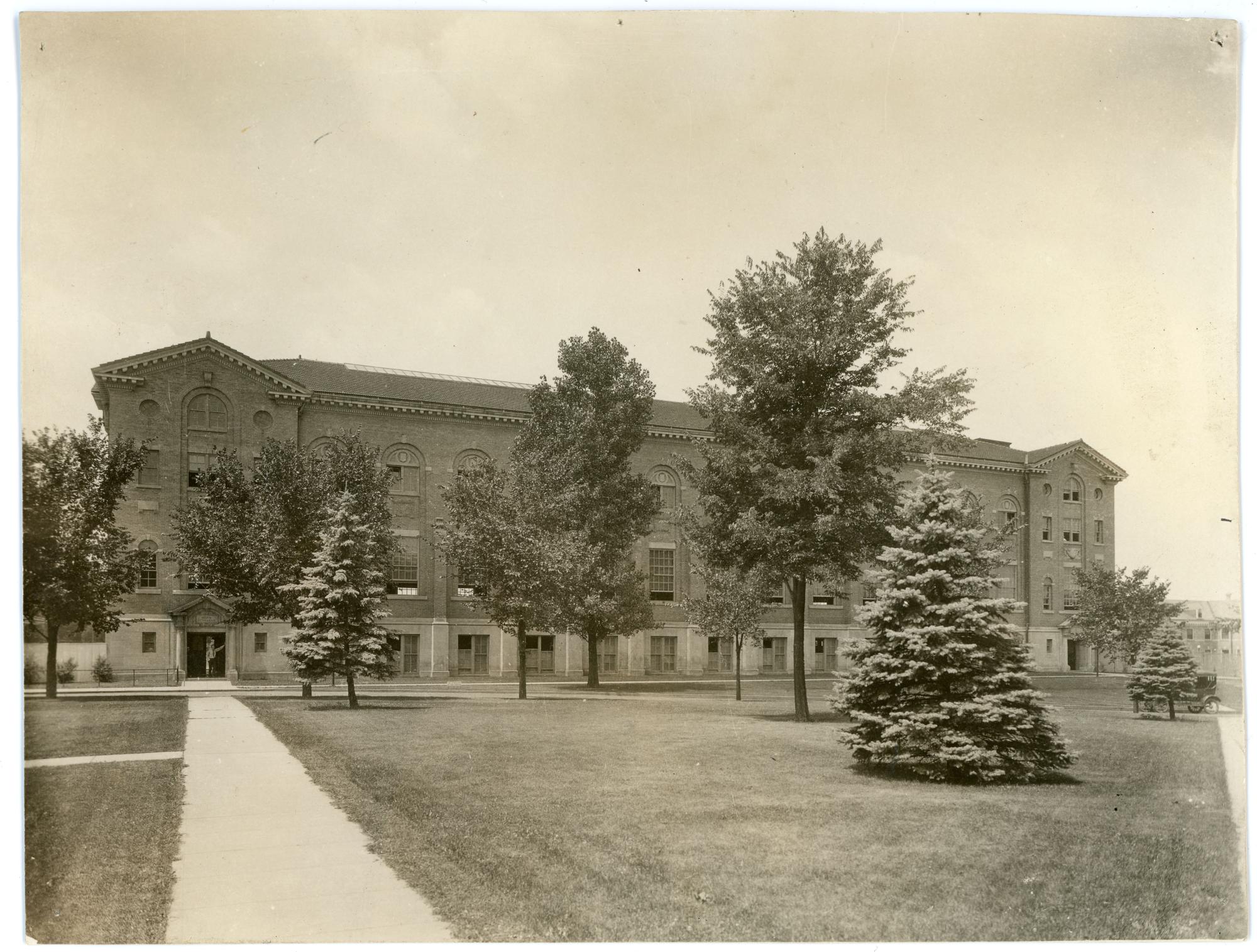
In 1901, G. B. Affleck was named Director of the new Department of Physical Training. It would supervise athletics at the school, but more importantly, it would also teach physical education to men.
Before approving any new physical education facilities, the Normal School Board of Directors directed President Seerley to "go East and acquaint himself with the most approved plans for Gymnasiums." After visiting over twenty-five educational institutions and several YMCAs, President Seerley reported to the Board that the school should build just one building that would serve both men and women.
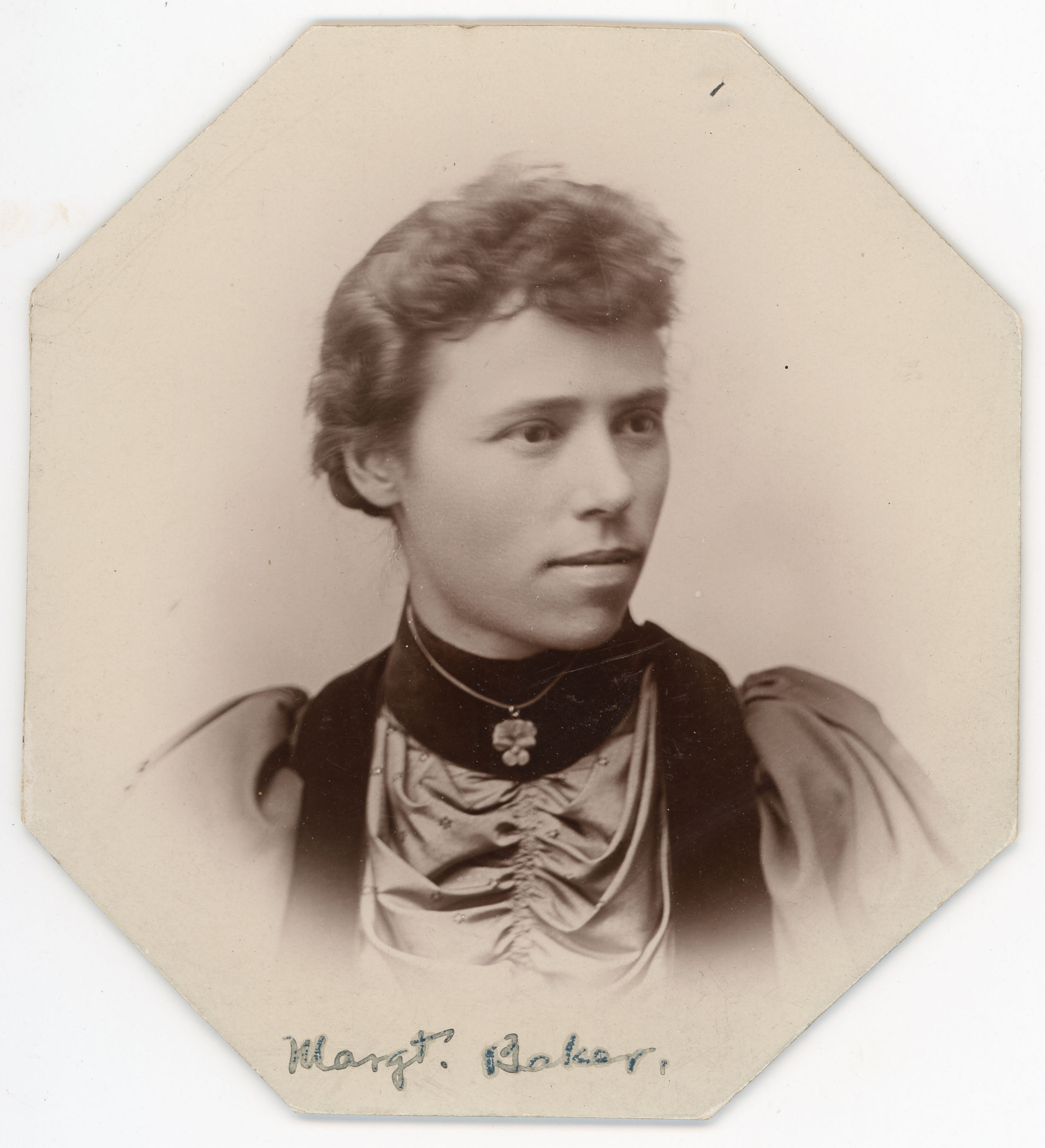
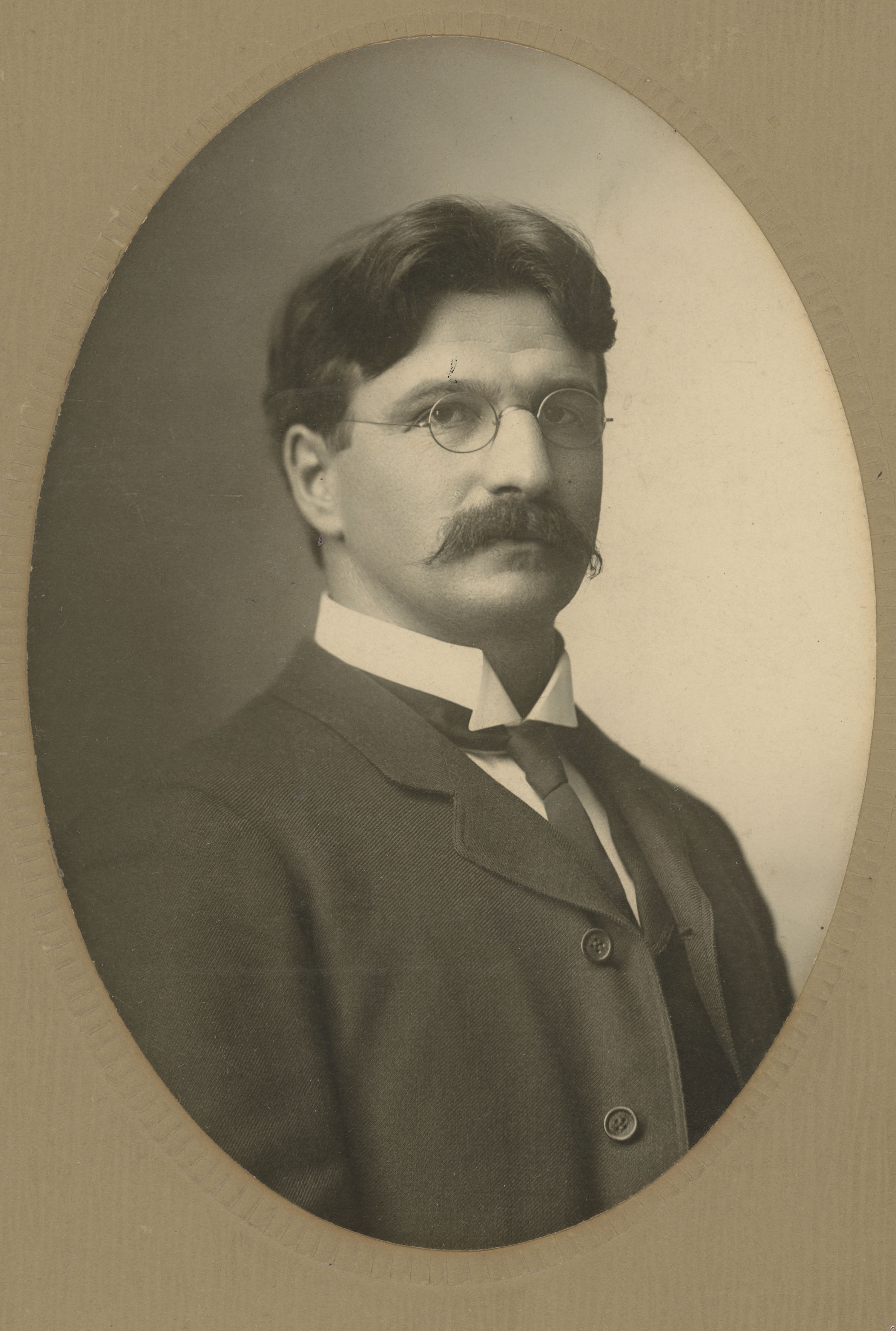
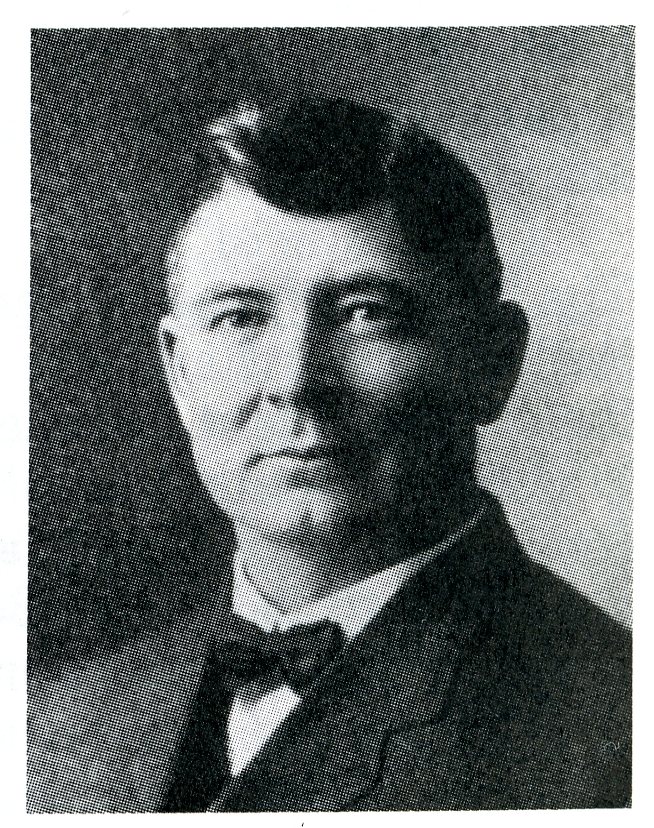
In November 1902, the Board engaged for the first time in what is now called campus planning and determined a location for a new gymnasium: the northwest corner of a proposed campus quadrangle that would include a library, laboratory, manual training building, and science building.
The gymnasium would be financed by a new state tax on real estate: one-tenth of a mill would come to the Normal School for capital improvements. This millage tax ultimately paid for most of the older red brick and limestone buildings on the eastern part of campus. The Board authorized James E. Robinson, Superintendent of Buildings and Grounds at the Normal School, to design a building whose cost would not exceed $60,000.
Excavation for the new building got underway in 1903, with construction continuing for the next several years. The new 68 X 230 foot building was dedicated on June 5, 1905 and provided women's facilities on its south end and men's facilities on its north end. The building included a 24 X 60 foot "natatorium," or swimming pool, and forty-eight "needle baths," or showers.
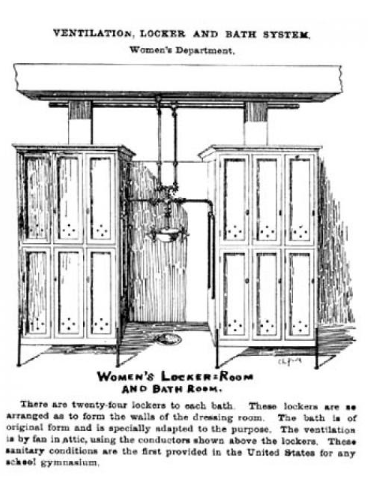
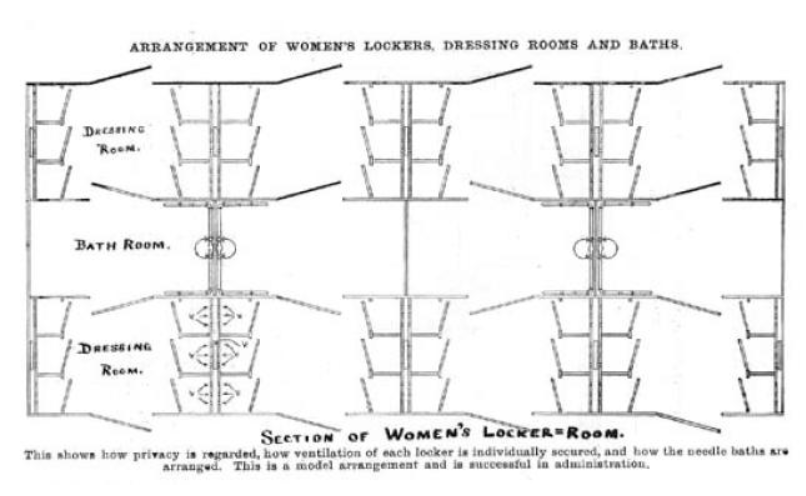
It was claimed that this was the first college pool west of the Mississippi. There were offices, a large open gymnasium, exercise rooms, classrooms, and a running track, all served by state-of-the-art ventilation and sanitary systems. The cost of the building and equipment was ultimately about $100,000.
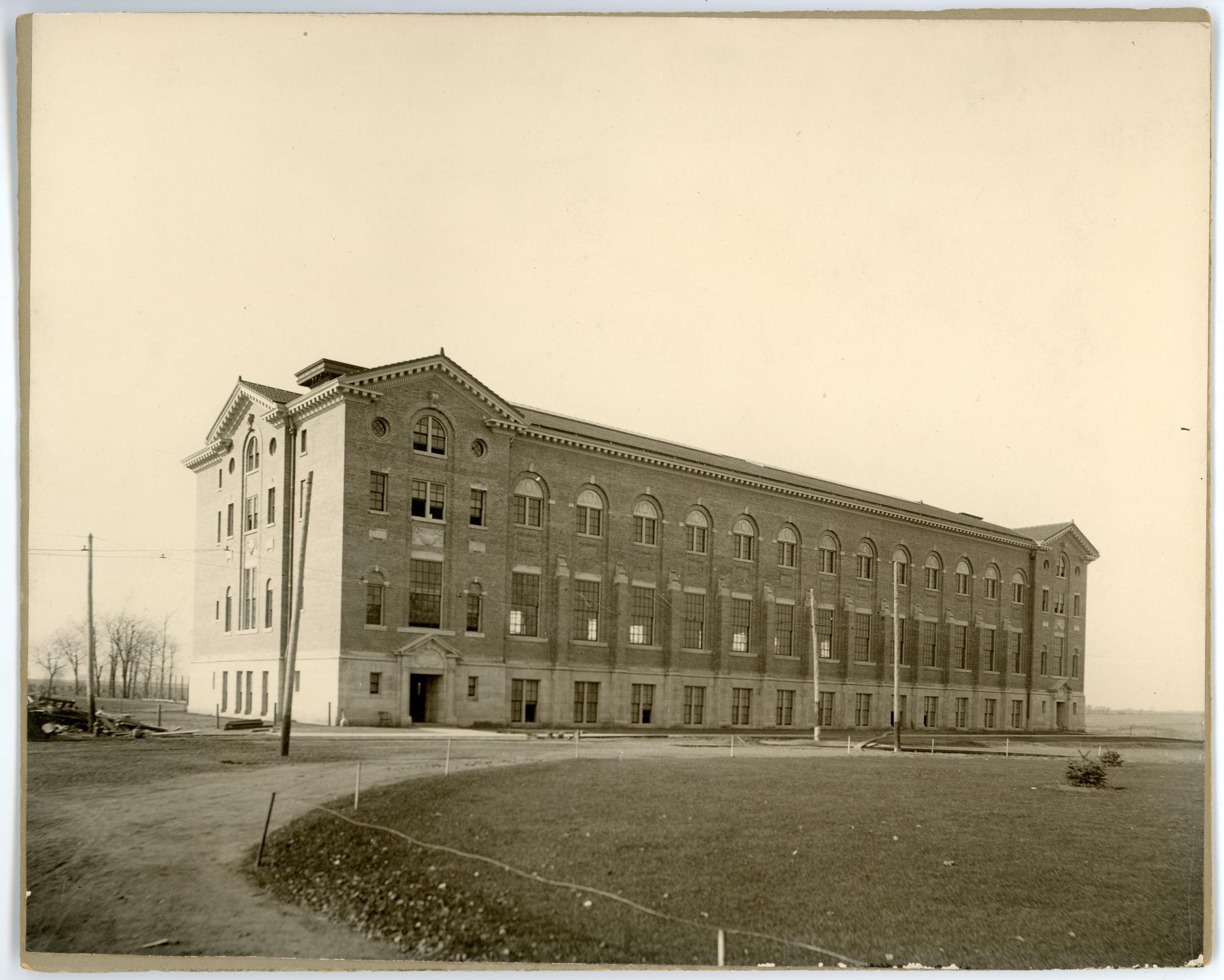
The building was designed to house physical education faculty and classes. However, banquets, examinations, and large gatherings were sometimes held in the large, open gymnasium.
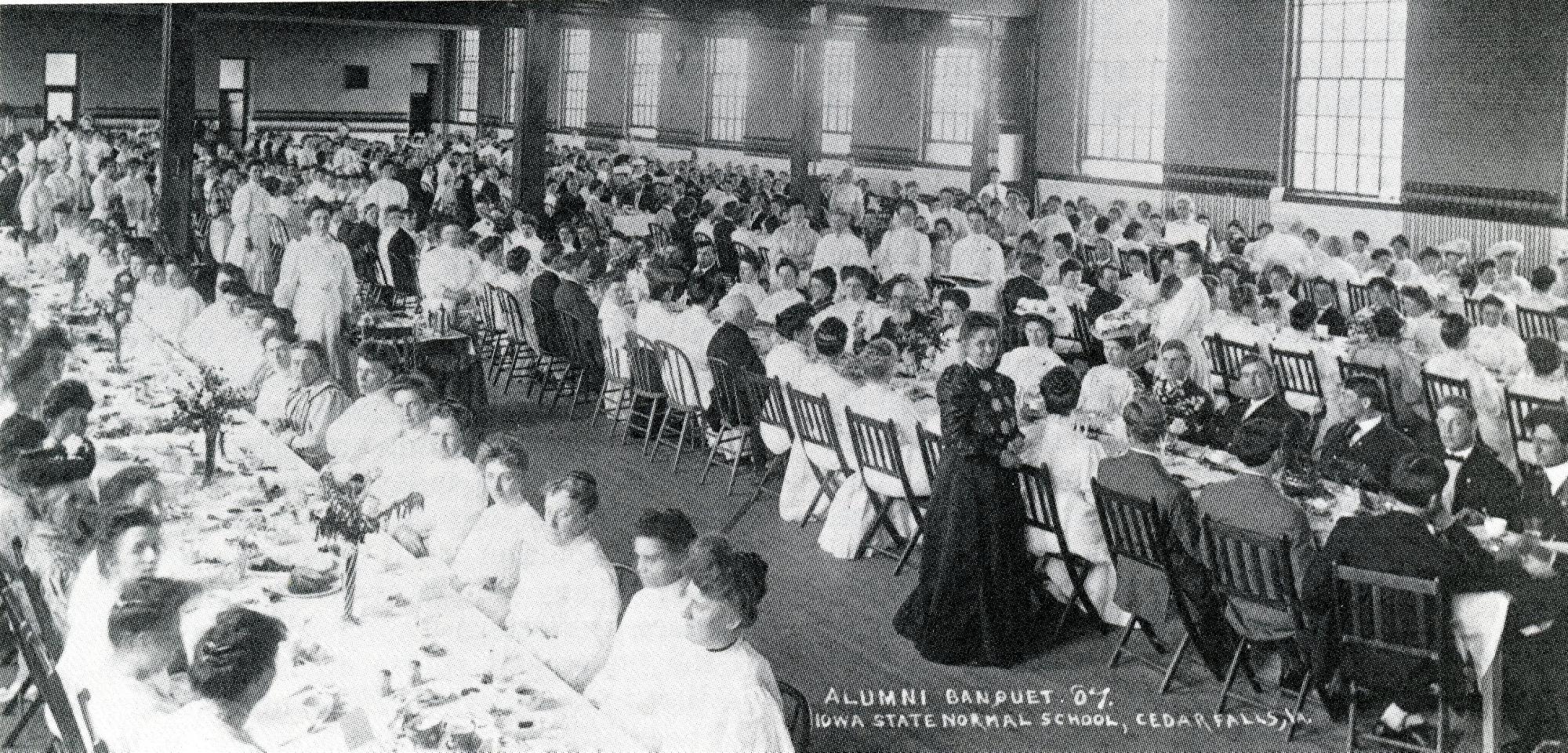
On October 1, 1918, during World War I, a Student Army Training Corps was organized on campus and forty-six men enlisted in the program for military service training. The Gymnasium served as their barracks and nearby athletics fields served as their drill ground. The Corps did not see any active service before the November 11, 1918 Armistice signaled an end to the need for military training on campus.
The Gymnasium served the campus as the sole physical education building until the West Gymnasium opened in 1925. At that time, men's classes and intercollegiate athletics were shifted to the new building and the Women's Gymnasium served women's classes and activities, though the open gymnasium space did serve as a dance floor and entertainment area until the Commons opened in 1933. In 1930, a lounge for women, with comfortable seating, was installed in the south part of the building's lower level.
In August 1935, the Board of Education announced plans for a large remodeling project for the Women's Gymnasium. The basement would be devoted entirely to dressing rooms. New floors and fireproof stairs would be installed, and an addition would be put onto the west side of the building to house a 36 X 90 foot swimming pool, with seating for five hundred spectators. The pool would be three feet six inches deep at one end and eleven feet six inches deep at the other end. The architectural style of the 90 X 142 foot addition matched that of the newly completed Commons. As a result, several Art Deco elements, such as the decorative limestone motifs near the south entrance, appear on the building.
Keffer and Jones of Des Moines were the architects for the project, which would cost $109,000. The project depended on the availability of state and federal funds: $60,000 from the state and $49,000 from the federal Works Progress Administration. State funds seemed assured, but the federal money was delayed. During the wait, the roof of the Women's Gymnasium was damaged in a severe storm that moved across campus in July 1936. Public Works Administration money finally did arrive, and work got underway by the spring of 1937. By June 1937, the crew of twenty men at work on the project was pouring the last of the foundation for the swimming pool, though progress had been hampered by a heavy rainstorm. Limestone for the south entrance had been laid and windows set in place, construction for the utility tunnel to the new pool was underway by late that month, and by November 1937, the bleachers had been poured, water treatment equipment installed, and workmen were placing decorative tile on the pool sides. Foreman Peter Olsen predicted that all work would be completed in a month.
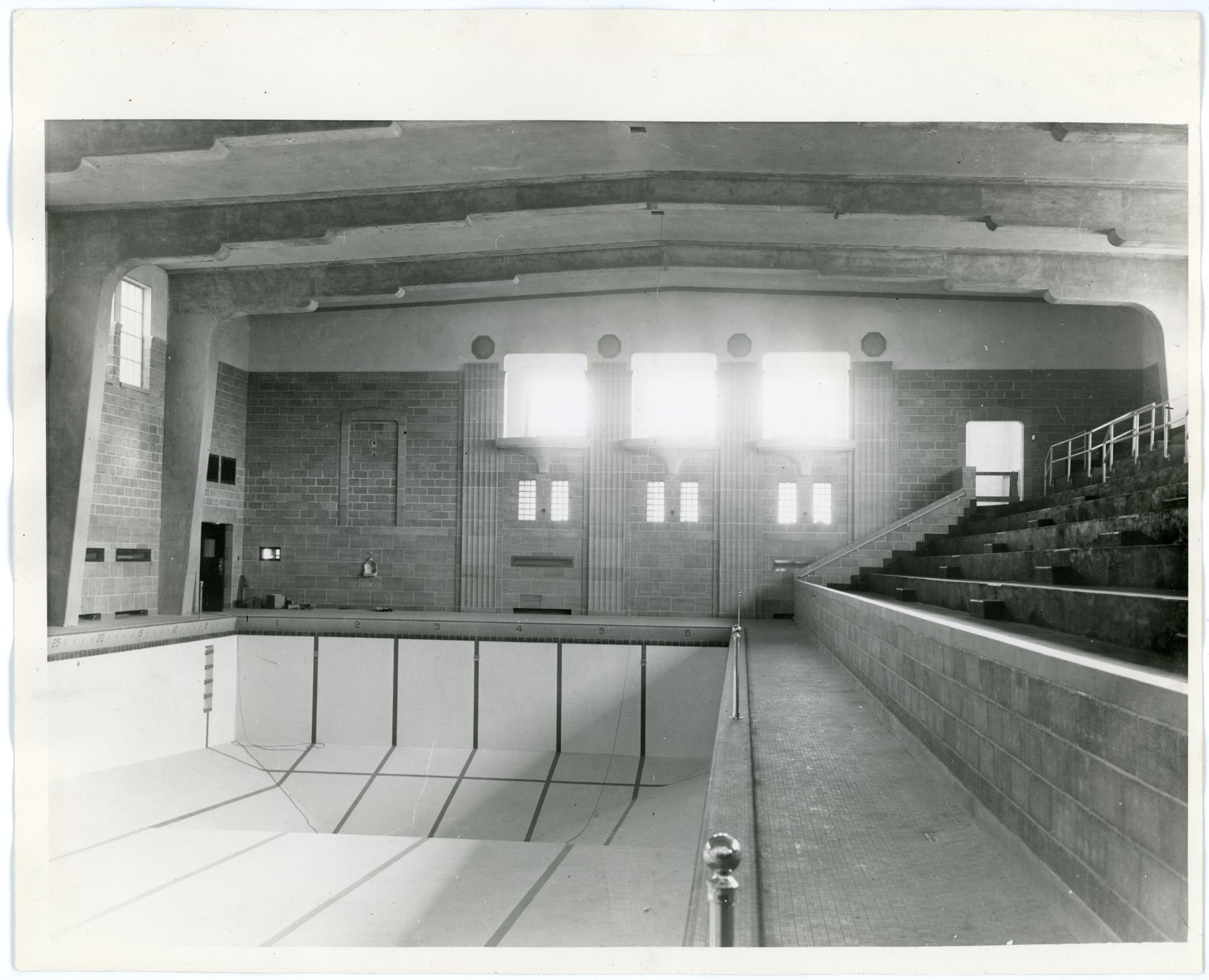
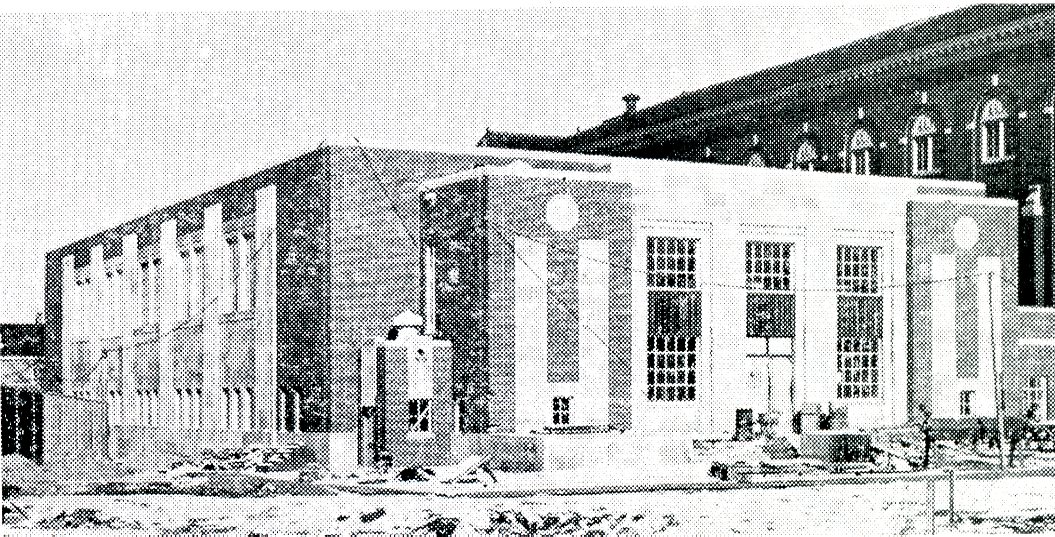
Work actually continued for the next several months and the pool was filled by February 1938. The new, unused swimming pool served only as a challenge to college students. The student newspaper, the College Eye, reported: "About two weeks ago, two freshman girls…jumped into their gym clothes and swam the length of the pool. They then dripped into the dormitory and reported to a pal that congratulations were in order--they had taken the first splash. Not to be outdone, the pal immediately went to the pool and jumped in herself. All three reported–’very cold'. For further details, you'd better see Catheryn Haffa, Florence Bliss, and Marjorie Person." Following this informal initiation, the pool opened formally with a water carnival during the spring term of 1938.
In June 1938, the interim committee of the General Assembly approved $70,000 for further improvements in the Women's Gymnasium. The federal Public Works Administration furnished additional funding and the final budget was about $125,000. This money would go toward projects that were proposed earlier but had not been included in the swimming pool project: new floors, new stairwells, roof repair, and modern locker rooms. The education students were glad about the prospect of changes in the "ill-drained floors, shower racks full of slivers, and complicated gadgets to control showers…” Bids were opened in October 1938 and work was underway by November 1938 with completion scheduled for November 1939.
Women's sports activities were limited during the construction period. In February 1939, Betty Lou Wood, a reporter for the College Eye hunting for a story, noted that she had sneaked inside the building and found the dark and rickety wooden stairs replaced by well-lit steel and concrete stairs, and the old locker rooms completely cleared out. It was during this renovation that two external features appeared that are clearly visible to this day. First, the gabled roof ends on the east and west sides of the two stairwells were squared off. Observers can still see the lines in the mortared brick joints where the gables were built up. Second, a new entrance in the center of the east side of the building was constructed.
The pool was a fine instructional facility which also proved popular among summer session students. In 1945, large ventilation fans were installed on the east side of the pool building to help dissipate moisture that had a tendency to build up inside, especially during the winter. During World War II, the WAVES units stationed in Bartlett Hall used the Women's Gymnasium for offices and classrooms.
In 1948, a reading room on the first floor of the Women's Gymnasium was converted into a specialized physical education library in memory of Professor Monica Wild, long-time head of the Department of Physical Education for Women, who died September 9, 1947. The library included Professor Wild's books as well as books donated by others. Librarians Margaret Fullerton and Lauretta McCusker catalogued the collection.
Over the years the Women's Gymnasium served as a center for recreational activities as well as formal physical education classes and programs. Some activities and services were limited to women, who could check out bicycles, roller skates, golf clubs, baseball bats and balls, and picnic equipment at the Women's Gymnasium. Other services included swimming, volleyball, table tennis, deck tennis, and informal get-togethers for both men and women.
Two rounds of remodeling in the summers of 1960 and 1961, costing about $60,000 and completed by the Beck-Erickson Company of Cedar Falls, resulted in improvements in the floors, locker rooms, and archery range in the Women's Gymnasium.
Rising enrollment and a heightened interest in personal fitness in the 1970s, 1980s, and 1990s put heavy pressure on all campus physical education and recreation facilities. The Department of Physical Education for Women and the Department of Physical Education for Men, which merged in 1979 to form the School of Health, Physical Education, and Recreation, scrambled to find space and appropriate facilities to meet the needs of instruction, recreation, and intercollegiate athletics. Completion of the Physical Education Center in 1971 and the UNI-Dome in 1976 helped to some extent. With the establishment and growth of women's intercollegiate athletics, the East Gymnasium was used as the practice site initially for men's and women's basketball and later, in 1979, after an exchange of practice sites with the West Gymnasium, for volleyball and for men's and women's gymnastics.
However, no matter how services were shuffled around, the East Gymnasium was showing its age. The physical education administration was forced into stop-gap measures to meet the needs of their students and faculty. Some faculty did not welcome the changes. Professor Barbara Yager, of the School of Health, Physical Education, and Recreation, was especially unhappy with the partition inserted into the pool that brought it into conformity with emerging national standards. In a letter to the Northern Iowan in 1979 she asked, "Why does our society persist in destroying the integrity of grand structures?" Other faculty made the case that the change was necessary if UNI were to compete in swimming and diving in any significant way. The partition resulted in a standard pool that was twenty-five yards long and a smaller pool measuring 10 X 36 feet. The modification project cost $13,000.
In 1980, the Monica Wild Library was dispersed and the room converted into a classroom and an office. In 1981, the East Gym underwent a $72,000 tuckpointing project that resulted in tighter mortar joints and clean limestone trim. That year also saw early talk about a new physical education building; the East Gymnasium and swimming pool would be torn down to provide the site. The most immediate need for physical education staff office space was met to a limited extent in 1983 with a $196,000 project to build new offices on the east side of the UNI-Dome. A major project in 1983 helped to secure and stabilize the roof of the East Gymnasium, and another in 1990 provided fire safety improvements. In January 1996, Health Beat, a fitness and health center, opened in the East Gymnasium, and provided students and faculty access to cardiovascular and weight training equipment. This service moved to the Maucker Union after remodeling in that facility was complete in 2004.
The days of the East Gymnasium as a physical education facility were coming to an end. In 1993, the building appeared on the Regents five-year capital improvement schedule for a $9.3 million remodeling project. In 1997, the administrative offices of the School of Health, Physical Education, and Leisure Services moved to the new Wellness/Recreation Center. After that, the East Gymnasium was used primarily as "swing space" for departments and services that were temporarily without a home because their own facilities were under renovation. For example, classes in electronic media, anthropology, and language were held there during the renovation of Lang Hall. Later, several student services, such as the Career Center, were housed there while Gilchrist Hall underwent remodeling.
The East Gymnasium was set for a radical change. Plans were developed to turn the building into a model, technologically-advanced instructional facility. Early plans indicated that the Department of Geography would move into the building, which would be renamed the Innovative Teaching and Technology Center. These plans also indicated that other campus programs, such as the Center for Educational Technology, the Center for the Enhancement of Teaching, and the Center for Academic Achievement, would also be housed there. Architects for the project were Herbert, Lewis, Kruse, and Blunck of Des Moines, who also designed Phase 3 of the Rod Library.
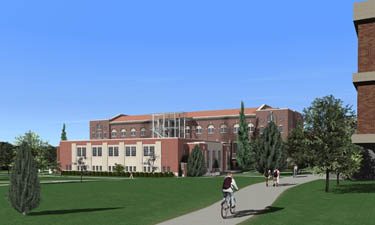
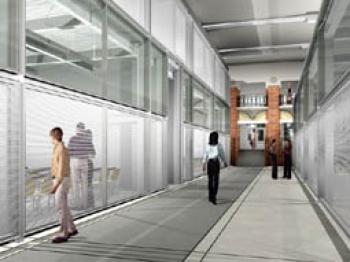
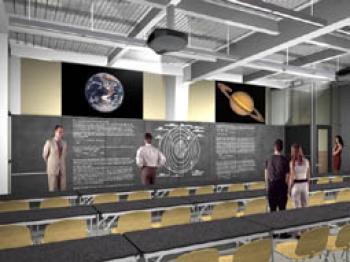
Bids for the renovation were received on April 27, 2004, with construction to begin in May. Both the interior and the exterior were completely renovated, though exterior architectural elements were preserved. The pool was removed. An entrance in the center of the east side of the building became the main point of entry; an elevator and stairwell were built on the west side. The old gymnasium space, with its elevated ceiling, was divided into two levels. Plans for an elevated walkway from the Center to the Rod Library were abandoned. The project was completed in early 2006 and dedicated in November of that year.
Compiled by Library Assistant Susan Witthoft; edited by University Archivist Gerald L. Peterson, July 1996; substantially revised by Gerald L. Peterson, with research assistance by Student Assistant Julie Wiese and scanning by Library Assistant Gail Briddle, January 2004; last updated, January 28, 2015 (GP); photos and citations updated by Graduate Assistant Eliza Mussmann, September 13, 2022; content updated by Graduate Intern Marcea Seible, June 2025.
